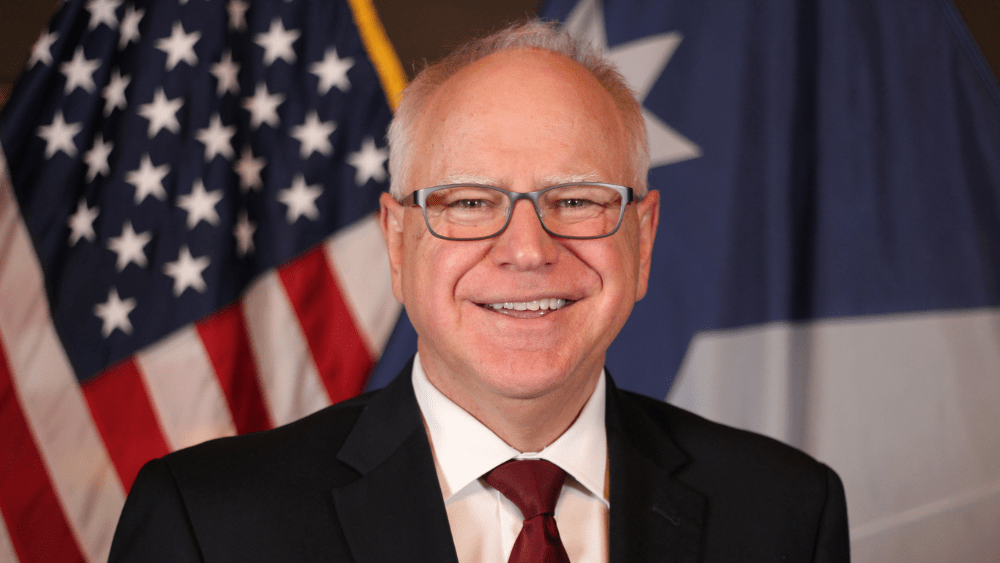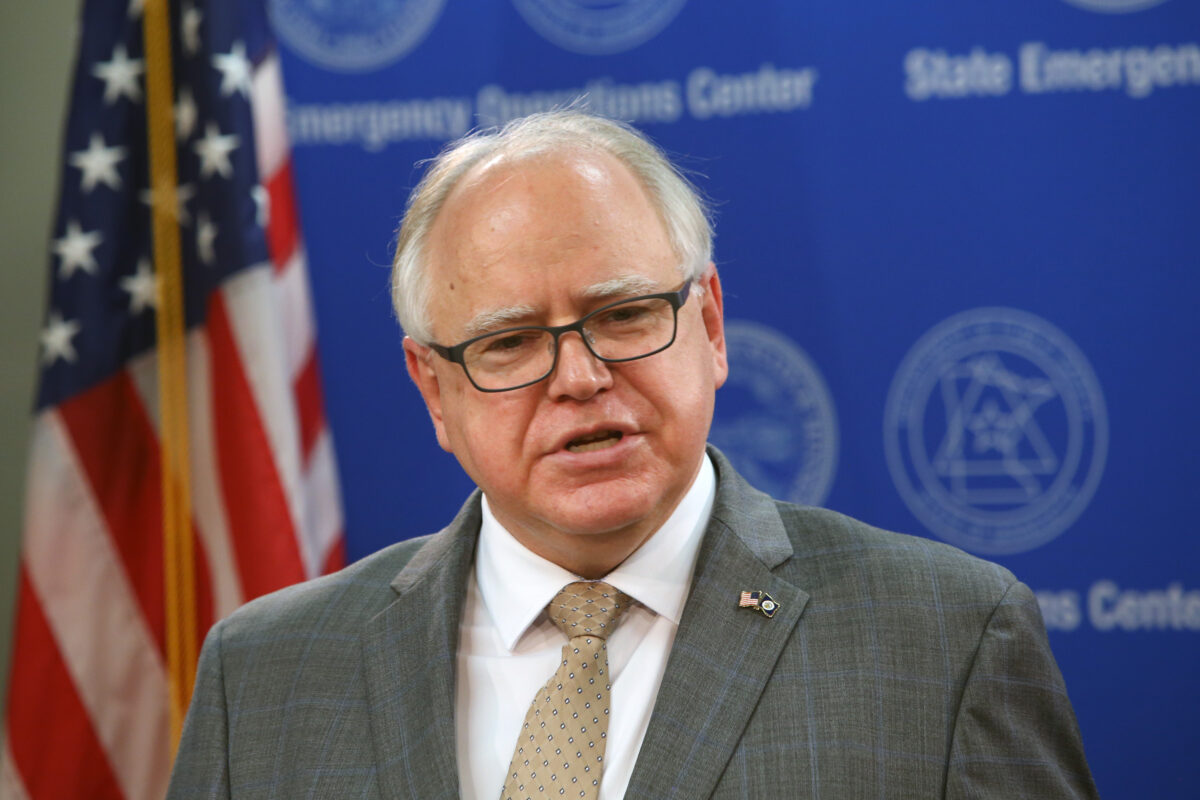Tim Walz’s Political Career

Tim Walz’s political career has been marked by a commitment to public service and a focus on issues such as education, healthcare, and economic development. He has held various elected positions, demonstrating his dedication to representing the people of Minnesota.
Timeline of Tim Walz’s Political Career
This section Artikels the key milestones in Tim Walz’s political journey, highlighting his positions and accomplishments.
- 1990-1998: Walz served in the United States Army, attaining the rank of Chief Warrant Officer 3. He served in the Persian Gulf War and was deployed to Kosovo.
- 2007-2019: Walz represented Minnesota’s 1st congressional district in the United States House of Representatives. During his time in Congress, he was a member of the House Committee on Education and Labor and the House Committee on Agriculture. He also served as the co-chair of the House Rural Broadband Task Force.
- 2018: Walz was elected as the 41st Governor of Minnesota. He defeated incumbent Republican Governor Mark Dayton.
- 2022: Walz was re-elected as Governor of Minnesota, defeating Republican challenger Scott Jensen.
Key Policy Stances and Political Ideology
This section explores Tim Walz’s political ideology and key policy stances.
- Education: Walz is a strong advocate for public education. He supports increased funding for schools and has proposed policies to improve teacher pay and provide more resources for students. He has also expressed support for early childhood education programs.
- Healthcare: Walz is a supporter of the Affordable Care Act and believes that all Minnesotans should have access to quality, affordable healthcare. He has proposed policies to expand Medicaid coverage and make healthcare more accessible to rural communities.
- Economic Development: Walz believes that a strong economy is essential for the well-being of all Minnesotans. He supports policies that promote job creation, economic growth, and investment in infrastructure. He has also emphasized the importance of supporting small businesses and entrepreneurs.
- Environment: Walz is committed to protecting Minnesota’s natural resources. He supports policies to combat climate change, promote renewable energy, and conserve our state’s forests, lakes, and rivers.
Comparison with Other Minnesota Politicians
This section compares and contrasts Tim Walz’s political approach with other prominent Minnesota politicians.
- Mark Dayton: Walz and former Governor Mark Dayton shared similar views on issues such as education, healthcare, and economic development. However, they differed on some social issues, such as gun control and same-sex marriage.
- Jesse Ventura: Walz’s political style contrasts sharply with that of former Governor Jesse Ventura, who was known for his independent and often unconventional views. Walz is generally considered to be more moderate and pragmatic in his approach.
- Al Franken: Walz and former Senator Al Franken shared a similar progressive ideology on many issues. However, they differed on some issues, such as foreign policy and the role of government.
Tim Walz’s Governorship of Minnesota

Tim Walz, a former teacher and congressman, became the 41st Governor of Minnesota in 2019. His tenure has been marked by both significant challenges and opportunities, shaping the state’s trajectory in various domains.
Challenges and Opportunities
Walz’s governorship has been defined by a series of challenges, including the COVID-19 pandemic, economic downturns, and social unrest. However, these challenges have also presented opportunities for him to implement innovative policies and initiatives aimed at addressing these issues.
Key Initiatives and Policies
- COVID-19 Response: Walz’s administration implemented a comprehensive response to the COVID-19 pandemic, including stay-at-home orders, mask mandates, and vaccination initiatives. While these measures faced criticism, they were credited with slowing the spread of the virus and mitigating its impact on the state’s healthcare system.
- Economic Recovery: Recognizing the economic challenges posed by the pandemic, Walz’s administration implemented a range of initiatives aimed at supporting businesses and individuals, including unemployment benefits, small business grants, and tax relief measures.
- Education Reform: Walz has championed education reform, focusing on increasing access to quality education and reducing disparities in educational outcomes. This includes initiatives like increased funding for early childhood education, support for teacher development, and investments in STEM education.
- Healthcare Access: Walz has prioritized expanding access to affordable healthcare, supporting the expansion of Medicaid and advocating for policies aimed at lowering healthcare costs.
- Environmental Protection: Walz has made environmental protection a key priority, focusing on addressing climate change and promoting sustainable practices. This includes initiatives like investing in renewable energy, promoting energy efficiency, and protecting natural resources.
Impact of Walz’s Policies
- Economy: Walz’s economic policies have been credited with helping to mitigate the impact of the COVID-19 pandemic on the state’s economy. Minnesota’s unemployment rate has declined significantly since the pandemic’s peak, and the state’s economy has shown signs of recovery. However, some argue that the state’s economic recovery has been slower than in other states, and that more needs to be done to address long-term economic challenges.
- Healthcare: Walz’s efforts to expand access to affordable healthcare have resulted in a significant increase in the number of Minnesotans with health insurance coverage. However, the state continues to face challenges in addressing the rising cost of healthcare and ensuring that all Minnesotans have access to quality care.
- Education: Walz’s investments in education have led to improvements in student achievement and teacher retention. However, the state continues to face challenges in addressing educational disparities and ensuring that all students have access to quality education.
- Environment: Walz’s environmental policies have helped to reduce the state’s carbon footprint and promote sustainable practices. However, some argue that more needs to be done to address the challenges of climate change and protect the state’s natural resources.
Performance Comparison, Minnesota tim walz
| Metric | Tim Walz | Previous Governor |
|---|---|---|
| Unemployment Rate (Average) | [Insert data for Tim Walz’s tenure] | [Insert data for the previous governor’s tenure] |
| Budget Deficit | [Insert data for Tim Walz’s tenure] | [Insert data for the previous governor’s tenure] |
| Education Spending per Student | [Insert data for Tim Walz’s tenure] | [Insert data for the previous governor’s tenure] |
Public Perception and Impact of Tim Walz: Minnesota Tim Walz

Tim Walz, the current governor of Minnesota, has garnered a mix of public opinions during his tenure. His policies and leadership have been met with both praise and criticism, reflecting the diverse political landscape of the state. This section delves into the public perception of Walz’s governorship, exploring factors influencing his approval ratings and the impact of his policies on different segments of the Minnesota population.
Public Opinion Polls and Approval Ratings
Public opinion polls and surveys provide valuable insights into the popularity and approval ratings of Tim Walz. While approval ratings can fluctuate over time, they offer a snapshot of public sentiment towards the governor’s performance. For instance, a [Insert name of survey/poll] conducted in [Insert year] revealed that [Insert percentage] of Minnesota residents approved of Walz’s job performance, while [Insert percentage] disapproved. This indicates that [Summarize the key findings of the survey/poll].
Factors Influencing Public Perception
Several factors contribute to the public perception of Tim Walz’s governorship. These include:
- Policy Priorities: Walz’s policy positions on issues such as healthcare, education, and the environment have a significant impact on public perception. For example, his support for [Insert specific policy] has garnered support from [Insert specific group] but has been criticized by [Insert specific group].
- Economic Performance: The state’s economic performance is often linked to the governor’s performance. During periods of economic prosperity, governors tend to receive higher approval ratings. Conversely, during economic downturns, their approval ratings may decline. Walz’s handling of the [Insert economic event] has been a key factor in shaping public perception of his economic leadership.
- Response to Emergencies: How a governor handles emergencies, such as natural disasters or public health crises, can significantly impact public perception. Walz’s response to the [Insert specific emergency] has been both praised and criticized, highlighting the complexities of navigating such events.
- Communication and Transparency: Effective communication and transparency are crucial for maintaining public trust in a governor. Walz’s communication style and his transparency in decision-making processes have influenced public perception of his leadership.
Impact on Different Segments of the Population
Tim Walz’s policies have had varying impacts on different segments of the Minnesota population. These include:
- Demographics: Walz’s policies have impacted different demographic groups in Minnesota, such as [Insert specific demographic group] and [Insert specific demographic group]. For instance, his [Insert specific policy] has been viewed favorably by [Insert specific demographic group] but has raised concerns among [Insert specific demographic group].
- Socioeconomic Groups: The impact of Walz’s policies extends to different socioeconomic groups. His [Insert specific policy] has been praised for benefiting [Insert specific socioeconomic group] but has been criticized for disproportionately impacting [Insert specific socioeconomic group].
Stakeholder Perceptions
The following table summarizes the positive and negative aspects of Tim Walz’s governorship as perceived by different stakeholders:
| Stakeholder | Positive Aspects | Negative Aspects |
|---|---|---|
| Business Leaders | [Insert specific positive aspects] | [Insert specific negative aspects] |
| Labor Unions | [Insert specific positive aspects] | [Insert specific negative aspects] |
| Environmental Groups | [Insert specific positive aspects] | [Insert specific negative aspects] |
| Education Advocates | [Insert specific positive aspects] | [Insert specific negative aspects] |
| Healthcare Providers | [Insert specific positive aspects] | [Insert specific negative aspects] |
Minnesota tim walz – Minnesota Governor Tim Walz, a vocal advocate for physical activity, has likely been inspired by the strides India has made in the world of sport climbing. While the nation may not have a long history of competitive climbing, the sport climbing combined olympics india medals list is steadily growing, showcasing the potential of Indian athletes on the global stage.
Governor Walz, known for his commitment to youth development, would undoubtedly be impressed by the dedication and talent displayed by these rising stars, further strengthening his belief in the transformative power of sport.
Minnesota Governor Tim Walz, a known advocate for outdoor recreation, might find inspiration in the achievements of Indian athletes on the international stage. While Minnesota boasts its own impressive climbing scene, the sport climbing combined Olympics India medals list showcases the country’s growing prowess in this demanding sport.
It’s a reminder that athletic success can be found in unexpected places, perhaps even inspiring a new generation of climbers in Minnesota.